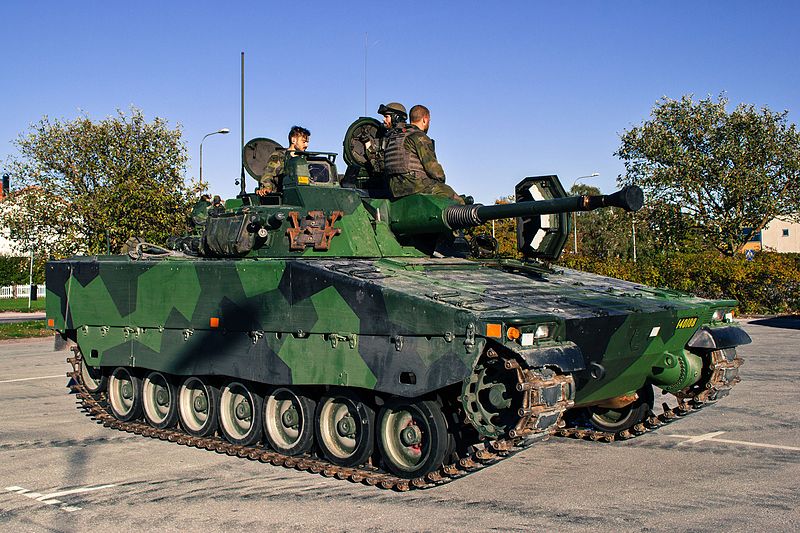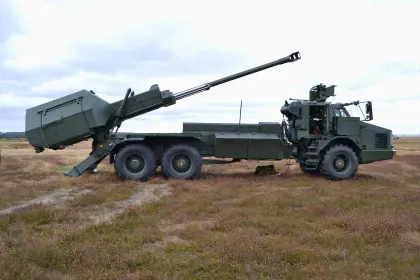President Volodymyr Zelensky announced that he was in talks with the British company BAE Systems to build a weapons production facility inside Ukraine.
“It is indeed a massive manufacturer of weaponry, the kind of weaponry that we need now and will continue to need,” Zelensky said during his daily address on Tuesday evening, May 30.
Which weapons exactly?
BAE Systems make everything from radios to “global combat ships” to fighter jets. They even produce civilian electric buses.
But what will be crucial for Ukraine are the weapons systems they already have in use that will need maintenance, repair and maybe even production domestically as the fight against Russia continues.
Near the top of this list is the Challenger 2 tank, a small number of which have been sent to Kyiv from the UK and are expected to play a key role in Ukraine’s long-awaited counteroffensive.
Another key piece of kit for the counteroffensive is the Bradley infantry fighting vehicle, also produced by BAE Systems.
The Bradley fighting vehicle appeared on battlefields in the early 1980s and is armed with a 25mm automatic cannon, a 7.62mm machine gun, and a TOW (tube-launched, optically tracked, wireless-guided) missile system that can hit and potentially take out an armored target more than two miles away.
The fully tracked transport vehicle typically carries a three-man crew and a six-man infantry squad. It has a top speed of just over 41 mph, so it is highly mobile.

Book Review: Michael Waltz, Donald Trump’s Incoming National Security Advisor
While the armored vehicles being sent are not tanks, the Bradleys provide “a level of firepower and armor that will bring advantages on the battlefield,” Pentagon spokesman General Pat Ryder said earlier this year.
“It’s not a tank, but it’s a tank killer,” Ryder said. “We’re confident that it will aid [Ukraine] on the battlefield.”
Then there are a couple of less known pieces of equipment that you should be aware of.
The Stridfordon 90 (Strf 90 or CV-90) is a fighting vehicle designed to carry infantry in assaults.
It is a highly mobile, battle-tested weapon more heavily armored than and with firepower superior to not only competing Russian designs, but practically all NATO-standard armored personnel carriers.

A Stridfordon 90 pictured in Sweden in 2016. PHOTO: Wikicommons
And Sweden’s Artiileriesystem 8 (Archer), is a cutting-edge, rapid-fire artillery piece capable of striking targets 50 kilometers away, landing six munitions on a target simultaneously, and firing 8 to 10 shells per minute – about twice as fast as any other medium-caliber howitzer, in the world.
Both the Stridfordon 90 and the Artiileriesystem 8 are part of an ambitious and low-profile Swedish program aiming to place one of the best-armed combat brigades in Europe in the hands of Ukraine’s generals.
The unit will likely be a spearhead formation in Kyiv’s upcoming counteroffensive.
Will Ukraine soon be able to manufacture all of these domestically?
No, at least not right away.
While Zelensky said he had discussed “the localization of production in Ukraine,” the first step in the process announced is to “start work on opening a BAE Systems office in Ukraine.”
He added: “And subsequently repair and production facilities for the company’s products.
“We are ready to become a major regional hub for the repair and production of various types of products of BAE Systems and are interested in making our relations more global.”
While no further details were given, it appears these facilities will focus on maintenance and repair of Western-supplied weaponry in Ukraine, removing the costly and time-consuming process of shipping damaged equipment out of the country to facilities abroad.
What about in the longer term?
Again, no exact details were given but a statement from Charles Woodburn, BAE Systems chief executive, gave a hint of longer-term plans.
He said: “It was a privilege to speak with President Zelensky as part of ongoing discussions about the support we’re providing to Ukraine.
“We’re proud to be working with our government customers to provide equipment, training and support services to the Ukrainian armed forces.
“We’re also exploring how we could support the Ukrainian government as it revitalizes the country’s defense industrial base to ensure their long-term security.”
You can also highlight the text and press Ctrl + Enter






